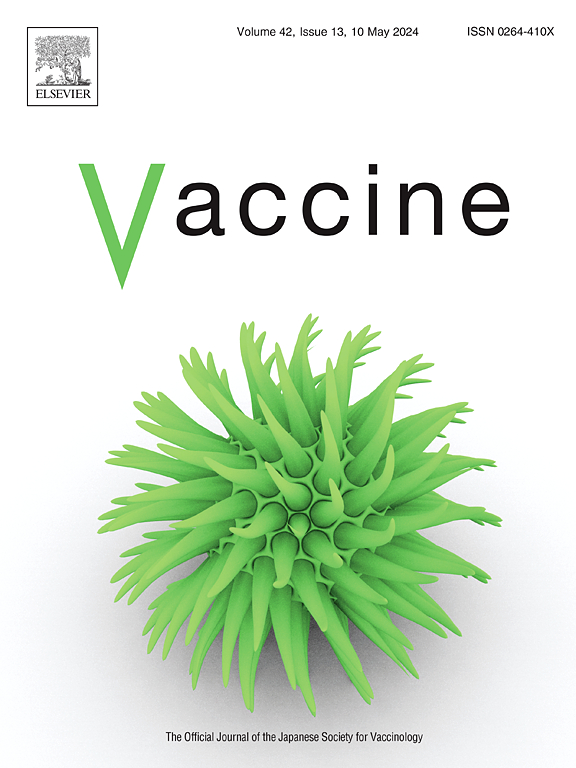A mosaic H3 subtype live attenuated influenza vaccine elicits broad immune responses to influenza a viruses
IF 4.5
3区 医学
Q2 IMMUNOLOGY
引用次数: 0
Abstract
Influenza A(H3N2) viruses are typically associated with reduced vaccine effectiveness (VE), especially in the elderly. To address this challenge, we developed a novel live attenuated influenza vaccine (LAIV) expressing a mosaic H3 hemagglutinin designed to maximize potential cytotoxic T lymphocyte (CTL) epitope coverage, using the A/Leningrad/134/17/57 (H2N2) backbone. The resulting mosaic reassortant virus exhibited temperature-sensitive and cold-adapted phenotypes and caused no significant weight loss or clinical signs in mice. Following prime-boost intranasal immunization in BALB/c mice, robust cellular immune responses were observed, with increased frequencies of splenic and pulmonary IFN-γ+ and IL-4+ T cells after restimulation, as well as elevated levels of pulmonary tissue-resident memory T cells. High levels of cross-reactive IgA were also detected in nasal and bronchoalveolar lavage fluids, covering multiple influenza virus strains. Additionally, broad serum antibody responses were induced, with HI and MN antibodies targeting 8 and 7 of 9 H3N2 vaccine strains. Virus challenge results showed that the mosaic reassortant virus conferred complete protection against the homologous-subtype strain A/Aichi/2/1968 (H3N2) and partial protection against the heterosubtypic strains A/Puerto Rico/8/1934 (H1N1) and A/Hunan/42443/2015 (H1N1), with survival rates of 20 % and 40 %, respectively. In contrast, all mice vaccinated with traditional monovalent LAIV or inactivated influenza vaccine showed 0 % survival. Moreover, lung viral loads showed a decreasing trend after infection, and pathological damage in the lungs was markedly alleviated compared to other groups. These findings suggest that combining the mosaic antigen with LAIV induces multi-layered immune responses and provides a rational vaccine design strategy for addressing the rapid antigenic evolution of H3N2 viruses.
一种马赛克H3亚型流感减毒活疫苗引起对甲型流感病毒的广泛免疫反应
甲型流感(H3N2)病毒通常与疫苗有效性(VE)降低有关,特别是在老年人中。为了应对这一挑战,我们开发了一种新型减毒流感活疫苗(LAIV),该疫苗表达了一种马赛克H3血凝素,旨在利用a /Leningrad/134/17/57 (H2N2)骨架最大化潜在的细胞毒性T淋巴细胞(CTL)表位覆盖。由此产生的马赛克重组病毒表现出温度敏感和冷适应表型,并且在小鼠中没有引起显着的体重减轻或临床症状。在BALB/c小鼠鼻内免疫后,观察到强大的细胞免疫反应,再刺激后脾脏和肺部IFN-γ+和IL-4+ T细胞的频率增加,以及肺组织驻留记忆T细胞水平升高。在鼻腔和支气管肺泡灌洗液中也检测到高水平的交叉反应性IgA,涵盖多种流感病毒株。此外,还诱导了广泛的血清抗体反应,HI和MN抗体针对9株H3N2疫苗株中的8株和7株。病毒攻毒结果表明,花叶重组病毒对同源型毒株A/爱奇/2/1968 (H3N2)具有完全保护作用,对异亚型毒株A/波多黎各/8/1934 (H1N1)和A/湖南/42443/2015 (H1N1)具有部分保护作用,存活率分别为20%和40%。相比之下,所有接种了传统单价LAIV或灭活流感疫苗的小鼠的存活率为0%。感染后肺病毒载量呈下降趋势,肺病理损伤较其他组明显减轻。这些结果提示,将花叶抗原与LAIV结合可诱导多层免疫应答,为解决H3N2病毒抗原快速进化提供了一种合理的疫苗设计策略。
本文章由计算机程序翻译,如有差异,请以英文原文为准。
求助全文
约1分钟内获得全文
求助全文
来源期刊

Vaccine
医学-免疫学
CiteScore
8.70
自引率
5.50%
发文量
992
审稿时长
131 days
期刊介绍:
Vaccine is unique in publishing the highest quality science across all disciplines relevant to the field of vaccinology - all original article submissions across basic and clinical research, vaccine manufacturing, history, public policy, behavioral science and ethics, social sciences, safety, and many other related areas are welcomed. The submission categories as given in the Guide for Authors indicate where we receive the most papers. Papers outside these major areas are also welcome and authors are encouraged to contact us with specific questions.
 求助内容:
求助内容: 应助结果提醒方式:
应助结果提醒方式:


